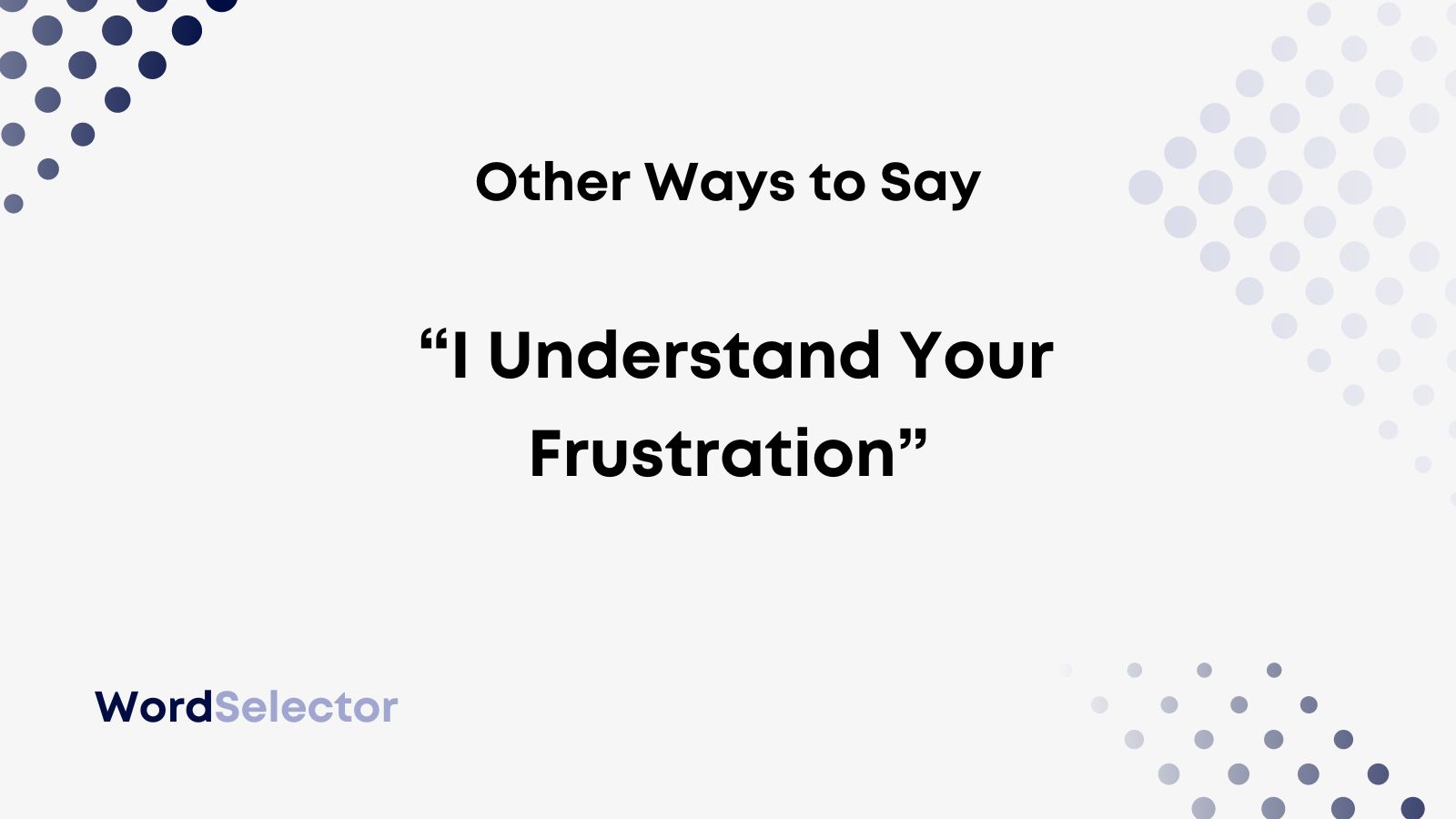Empathy goes a long way when dealing with frustrated clients or customers. If you’re in charge of emailing them, you should know what to write instead of saying “I understand your frustration.”
Luckily, we’re here to help.
This article has gathered the best synonyms to show you other ways to say “I understand your frustration.”
Other Ways to Say “I Understand Your Frustration”
- I can imagine how aggravating this must be
- I fully empathize with your problem
- Of course, I understand what you’re saying
- I sense your frustration
- I appreciate your frustrations here
- I’m aware of your annoyance with this
- I know this isn’t easy
- I’m with you on this and understand why you’re angry
- I can tell you’re annoyed
- I understand why you’re angry
KEY TAKEAWAYS
- “I understand your frustration” is a suitable phrase in formal emails showing you empathize with a customer.
- Try “I can imagine how aggravating this must be” when dealing with professional complaints.
- “I fully empathize with your problem” is a great informal synonym to use.
Keep reading to learn the best formal and informal alternatives. We’ve also added some examples to help you with each one.
The final section will also help you if you’re wondering whether “I understand your frustration” is correct. We recommend reviewing it before deciding on which synonym works best.
I Can Imagine How Aggravating This Must Be (Formal)
This is a great phrase if you want to know how to say “I understand your frustration” professionally.
“I can imagine how aggravating this must be” works well when empathizing with a client. It shows you understand why they’re angry, and you want to do whatever you can to help them.
The phrase works best with clients and customers. It’s a great way to remain more friendly with them and let them know you’ll do whatever you can to help them.
After all, nobody wants to be aggravated about something, especially if you (as the employee) have a way to fix it.
Generally, this phrase works best when you have a solution or plan to help someone. Don’t use it unless you can guarantee some kind of solution to help them feel less angry.
This email example should clear things up if you still need help:
Dear Mr. Parker,
I can imagine how aggravating this must be. Please take comfort in the fact that I’m doing all I can to fix this.
Yours,
Greta Carlisle
I Fully Empathize With Your Problem (Informal)
Empathy goes a long way in customer emails. If you can empathize with your customers, you’ll find they’re more receptive to the things you say.
Therefore, “I fully empathize with your problem” is another way to say “I understand your frustration.”
It works well as a more conversational alternative. It shows you’re on the same level as the customer and don’t want to use formal language to make them feel below you.
We generally recommend this one if you’re trying to calm a customer down. It’s a great way to show that you understand them and want to do everything you can to come to a solution.
Also, here’s a great sample email to help you with it:
Dear Philip,
I fully empathize with your problem. I’ll do what I can to help you complete this project before it’s too late.
Best regards,
Sean Kingston
Is It Correct to Say “I Understand Your Frustration”?
It is correct to say “I understand your frustration.” It’s also a very popular choice in customer-service emails when dealing with frustrated customers.
To sound more professional, you can also include “we.” For instance:
- We understand your frustration.
Using “we” shows you represent your company rather than just yourself. It’s less personal, but it appears more professional overall.
Also, feel free to use any of these extensions to the phrase:
- I can understand your frustration
- I do understand your frustration
- I truly understand your frustration
- I can totally understand your frustration towards this issue
- I completely understand your frustration and apologies for the inconvenience caused
As you can see, each of these extensions emphasizes the impact of the phrase. They show you genuinely understand someone for their frustrations.
We recommend using these when you’re trying to get on a customer’s good side.

